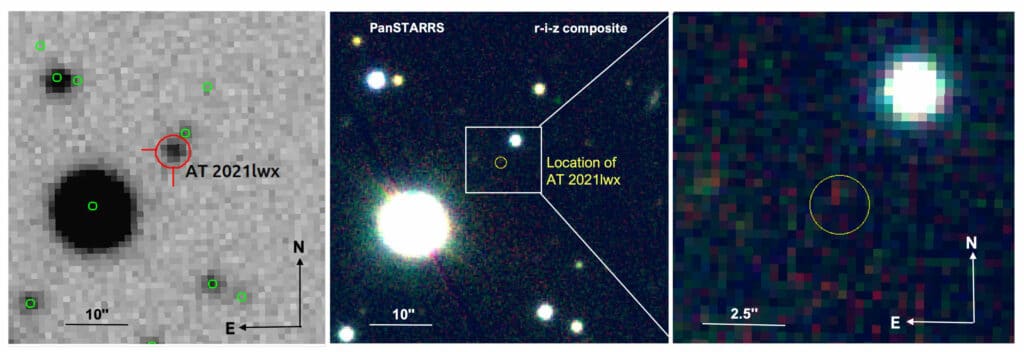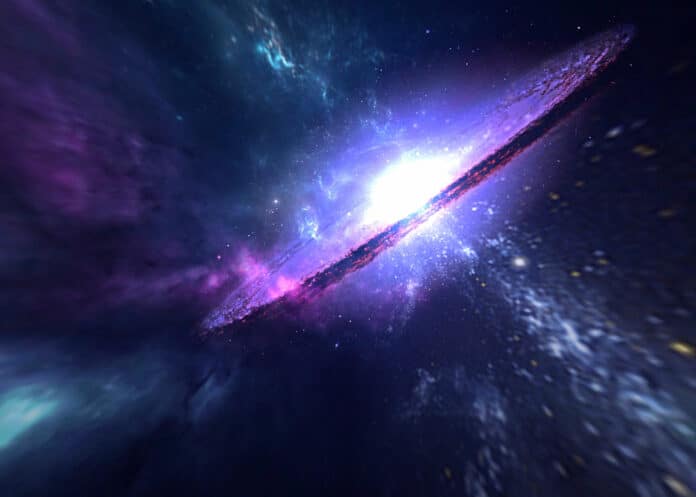Recent advances in untargeted all-sky surveys have led to many discoveries of astronomical transients related to the extreme physical conditions in the centers of galaxies. These discoveries have enabled transformative progress in our understanding of the disruptions of stars due to tidal forces when they pass close to supermassive black holes (SMBH) called tidal disruption events.
A supermassive black hole in a remote area of the sky is tearing away a distant star, causing it to die violently and dramatically. A bright, active, long-lasting transitory object that might have started civilizations and inspired stories didn’t flash through the night sky. Instead, astronomers operating as celestial supersleuths discovered signs of the star’s death phase in a quantity of computer-gathered telescope data where it had been dormant for years.
The object was assigned a name ZTF20abrbeie, or, as astronomers affectionately call it, “Scary Barbie.
Danny Milisavljevic, an assistant professor of physics and astronomy at Purdue University’s College of Science, said, “Barbie for its alphanumeric designation and “scary” because It’s so much of an outlier; its characteristics are terrifying!”

In the study, astronomers analyzed the data to conclude that the bright, long-lived transient is a black hole consuming a star.
Graduate student Bhagya Subrayan said, “We think a supermassive black hole pulled in a star and ripped it apart. The forces around a black hole, called tidal disruption, pull other objects apart in a process called ‘spaghettification.’ We think that’s what happened but on extreme time scales: The most massive black holes rip apart a massive star. The duration is unlike anything we’ve ever seen before, and it produced the most luminous transient in the universe.”
How did Scary Barbie only become known today if it is so brilliant and well-known, given that datasets suggest the initial sightings happened in 2020?
It was undetectable. Although bright, it is also very far away and in a sparsely populated sky area. The AI engine from Milisavljevic’s lab was used to find the anomaly. The Zwicky Transient Facility used the Palomar Observatory in California to conduct its observations, combed through by the Recommender Engine For Intelligent Transient Tracking (REFITT).
Milisavljevic said, “REFITT does big data analysis. It combs through millions of alerts and figures out what interesting things we might want to look at closer. This is a great example. Computers are good at finding things when we can tell them precisely what to look for. But things like this, anomalous objects, the computer often doesn’t even know to look for. It doesn’t even have a template. This is so different from anything else we’ve ever seen that we hadn’t even gotten around to trying to classify it. It’s been hanging out in the public data for years.”
The team used data from other telescopes, including the Lick Observatory in California and the W.M. Keck Observatory in Hawaii. Spectrographic analysis from those telescopes helped the team put a name to the odd phenomenon the data reported.
Milisavljevic said, “There are few things in the universe that can be so powerful, reactions that can be this long-lived. Discoveries like this open our eyes to the fact that we are still uncovering mysteries and exploring wonders in the universe – things no one has ever seen before.”
Journal Reference:
- Bhagya M. Subrayan et al., Scary Barbie: An Extremely Energetic, Long-Duration Tidal Disruption Event Candidate Without a Detected Host Galaxy at z = 0.995, arXiv (2023) The Astrophysical Journal Letters. DOI: 10.48550/arxiv.2302.10932
